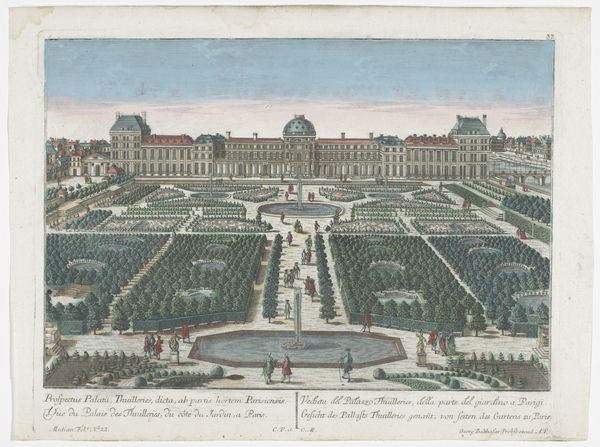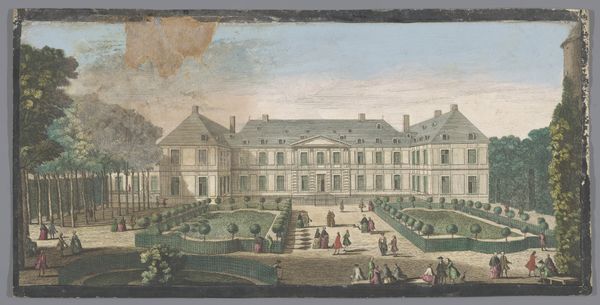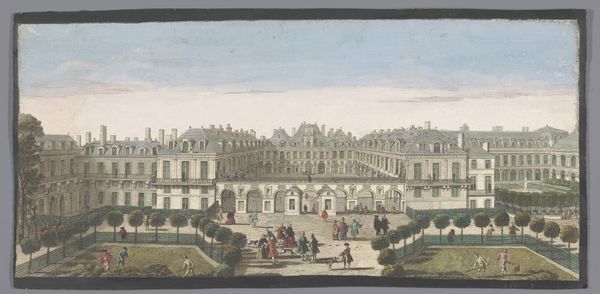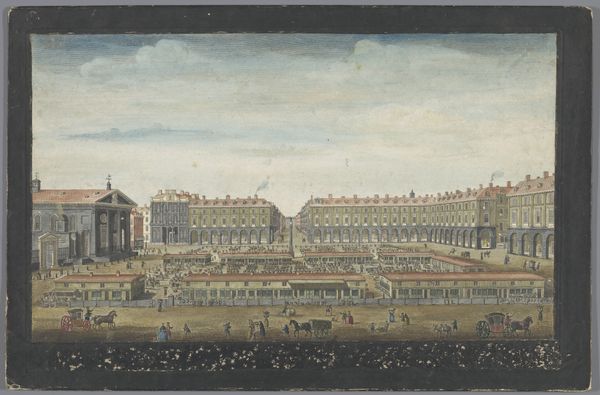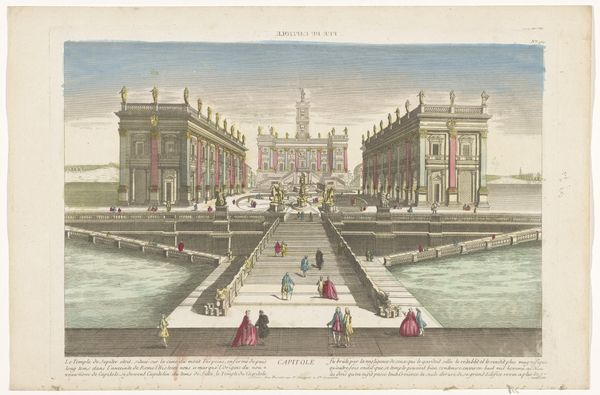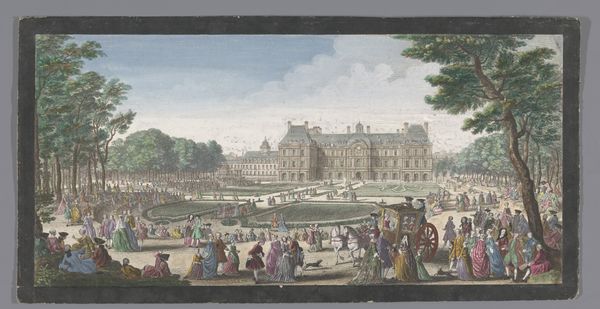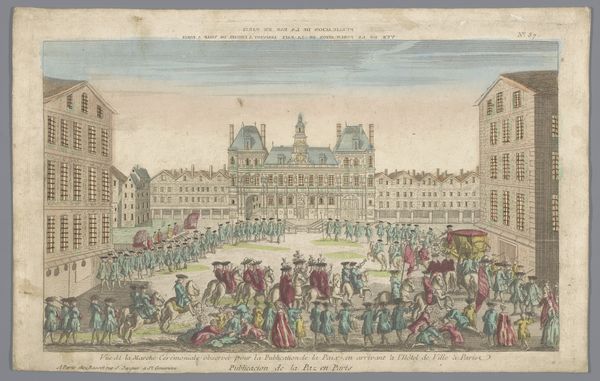
Gezicht op de Jardin des Tuileries te Parijs gezien richting het Palais du Louvre 1745 - 1775
0:00
0:00
painting, engraving
#
baroque
#
painting
#
landscape
#
cityscape
#
engraving
Dimensions: height 302 mm, width 438 mm
Copyright: Rijks Museum: Open Domain
Curator: What a delightfully ordered world we see here! This is "View of the Tuileries Garden in Paris Facing the Louvre Palace" an engraving dating to somewhere between 1745 and 1775, by Jean-François Daumont, held in the collection of the Rijksmuseum. Editor: My first impression is one of deliberate artifice. The colors are delicate, almost pastel, and the composition is so rigidly controlled it feels less like a representation of nature and more like a stage set. Curator: Indeed. The formal garden design speaks volumes about power, control and resources in this period of urban development. Consider the labour required to create such meticulously shaped trees and the perfectly symmetrical beds, as well as the print making craft here. The tooling and production behind engravings like these played a critical role in circulating images of the city and shaping its identity. Editor: Absolutely, but look at how the garden functions symbolically. The eye is drawn, inevitably, down the central axis to the palace. It’s a potent visual metaphor of centralized authority. Even the figures populating the space, rendered in these small marks, seem to conform to this rigid geometry, participants in a carefully orchestrated social drama. Each mark with clothing has visual impact. Curator: I would add to that! Look at the material reality, too, and consider the purpose. Prints like this were made for mass production, which lowered its commodity and made the images accessible to all kinds of buyers as souvenirs, interior decoration, historical document of an era, and even political agenda setting. These were used to reinforce existing structures and make an urban statement through art in people's homes. Editor: Yes, it underscores how symbols and social class often became very public visual performance. The palace and garden design convey ideas about civic pride, a vision the people who commissioned these views would share to celebrate themselves and maintain that era and identity in people's memory. The fountains, trees, layout: the essence of urban planning encoded within the artistic production! Curator: By bringing together the art with its place in material circulation and with urban power in this period of France, hopefully this gives our visitors a deeper idea of the context that can expand our engagement. Editor: Absolutely! It's like the city and society have become inextricably linked in this single print. We can now walk around to further investigate!
Comments
No comments
Be the first to comment and join the conversation on the ultimate creative platform.
